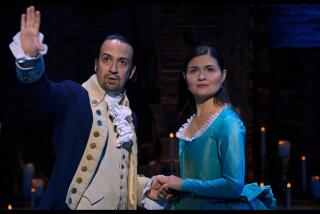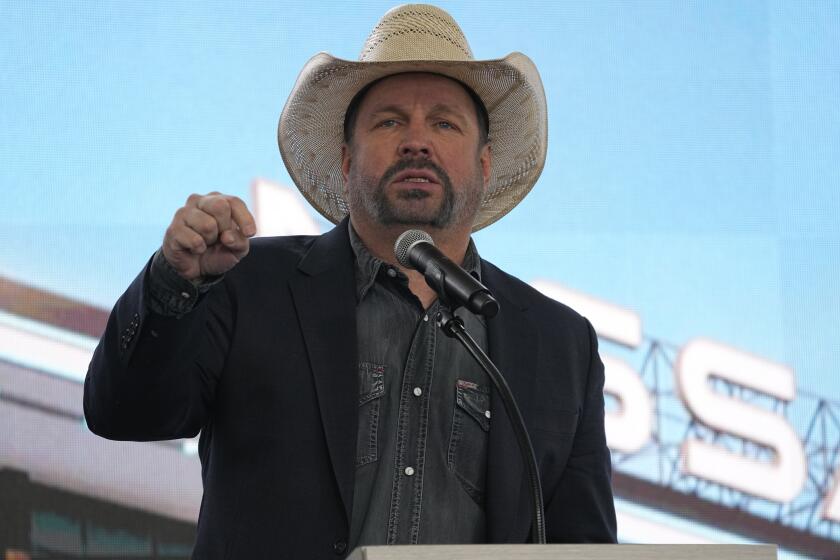Grabbing music by the tale
Writing about music is a thorny task. What are the words and phrases that can describe and explain what is happening in a Mozart concerto, a Charlie Parker improvisation or a Bill Monroe bluegrass tune? How does one illuminate the elusive connections between the musician and the music?
Imagine, as well, that all those questions must be dealt with in the context of a relatively brief newspaper column or magazine article.
It’s a task Nat Hentoff has been taking on since the ‘50s. Although he is widely known as a 1st Amendment activist -- through such books as “The War on the Bill of Rights and the Gathering Resistance” and “Free Speech for Me -- but Not for Thee” -- the larger part of his substantial catalog of books is devoted to a lifelong fascination with jazz and the artists who play it.
“American Music Is” is a collection of columns and articles written for the Wall Street Journal and JazzTimes magazine, largely between 1995 and 2003. (A single entry is dated 1988.) The title recalls Hentoff’s 1976 book, “Jazz Is,” expanding the earlier work’s jazz perspective to encompass sections titled “The Blues,” “The Rainbow of Country Music” and “The Farther Rainbow,” as well as “The Jazz Voice” and “Jazz Ahead.” The methodology, however, remains similar. In “Jazz Is,” Hentoff wrote, “I figured that if I could write a book about [musicians’] lives ... readers would see that they don’t have to know anything about chords or time signatures to feel Billie Holiday or Charles Mingus speaking directly to them of the memories and desires that link us all.” It’s a good idea in principle, but this time it’s less successful in practice than it was in his earlier book.
In the more than 60 entries of “American Music Is,” Hentoff writes again, in comparably intimate fashion, about Holiday and Mingus and a diverse selection of subjects including Duke Ellington, Dizzy Gillespie and Frank Sinatra, as well as Willie Nelson, writer and jazz aficionado Ralph Ellison and the Nitty Gritty Dirt Band.
He finds his verbal way into the abstract process of making music by avoiding information that smacks of technical evaluation and relying instead upon anecdote. Does it work? Only up to a point, largely because he tends to bypass his own expertise, turning instead to commentary by others or to artists’ interpretations of their own creativity. In one successful example, Hentoff quotes saxophonist John Coltrane in a poignant explanation of the endless questing that was so elemental to his art: “I wish I could walk up to my music as if the first time, as if I had never heard it before.”
In an Ellington story, he recalls a remark in which the bandleader-composer describes what he looks for in a musician: “First of all ... I want someone who knows how to listen.” But Ellington’s thoughts, expanded by a few sentences, appear a few pages later in an essay on alto saxophonist Phil Woods -- evidence of the perils of the anecdotal approach as well as the failure to deal editorially with the inevitable repetitions that occur in collections of short essays and newspaper columns.
Other stories recur in several essays: a recollection of the first time Hentoff heard Elvis Presley, mistaking him for the blues singer Arthur “Big Boy” Crudup, and a report about an exchange he had with tenor saxophonist Lester Young in which both agreed that they liked Dixieland music, “if it’s good.”
Hentoff has half a century of similarly pithy quotes from which to choose, either from his own sources or from other writers. And there’s the rub. Virtually every piece in the book is filled with citations spinning off from such lead-ins as “As [so and so] wrote.... “ And “[so and so] described what happened when.... “ And “In his recent book [so and so] writes....”
The practice is pushed to the extreme in a Louis Armstrong story for JazzTimes in which Hentoff refers -- almost in successive paragraphs -- to remarks the great trumpeter made to Gilbert Millstein of the New York Times, to Gary Giddins for his book “Satchmo” and in a letter to Leonard Feather from the book “Louis Armstrong in His Own Words: Selected Writings.”
Some of the best material is from his own previous works. In an essay titled “Jazz and Deep Jewish Blues,” he includes a segment from his memoir, “Boston Boy,” with an insightful description of a cantor’s singing: “What he sings is partly written, largely improvised. He is a master of melisma -- for each sacred syllable, there are three, four, six notes that climb and entwine, throbbing in wait for the next spiraling cluster.”
Passages of this sort appear far too rarely in “American Music Is.” More often, Hentoff’s worthy perceptions are swallowed up in his emphasis on the artist rather than the music, on the personality rather than the process, and by the repeated use of other observers’ views. Lost along the way are the musically knowledgeable insights that gave such credibility to his early influential writings about jazz. *
More to Read
The biggest entertainment stories
Get our big stories about Hollywood, film, television, music, arts, culture and more right in your inbox as soon as they publish.
You may occasionally receive promotional content from the Los Angeles Times.









